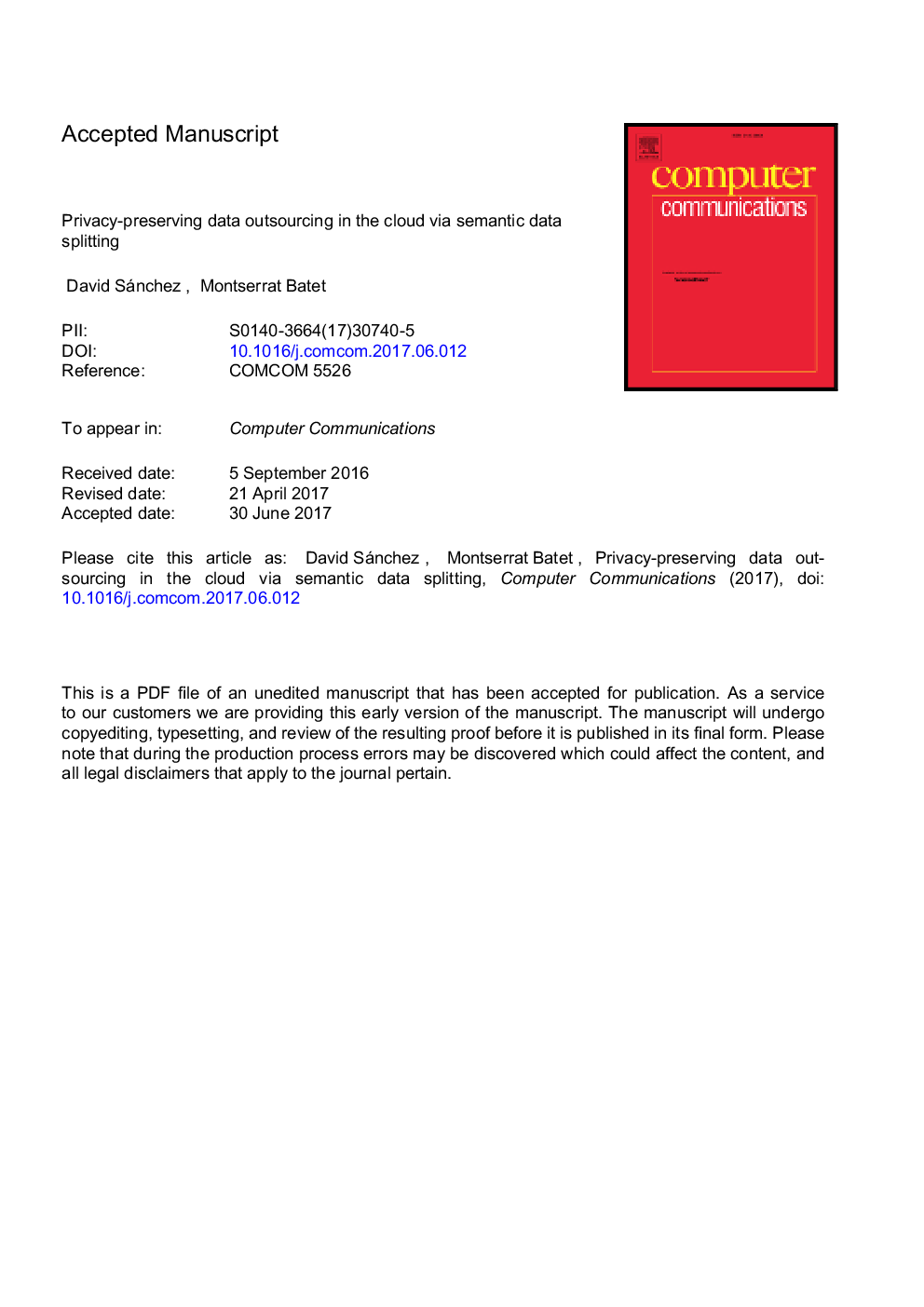| Article ID | Journal | Published Year | Pages | File Type |
|---|---|---|---|---|
| 4954292 | Computer Communications | 2017 | 36 Pages |
Abstract
Even though cloud computing provides many intrinsic benefits (e.g., cost savings, availability, scalability, etc.), privacy concerns related to the lack of control over the storage and management of the outsourced (confidential) data still prevent many customers from migrating to the cloud. In this respect, several privacy-protection mechanisms based on a prior encryption of the data to be outsourced have been proposed. Data encryption offers robust security, but at the cost of hampering the efficiency of the service and limiting the functionalities that can be applied over the (encrypted) data stored on cloud premises. Because both efficiency and functionality are crucial advantages of cloud computing, especially in SaaS, in this paper we aim at retaining them by proposing a privacy-protection mechanism that relies on splitting (clear) data, and on the distributed storage offered by the increasingly popular notion of multi-clouds. Specifically, we propose a semantically-grounded data splitting mechanism that is able to automatically detect pieces of data that may cause privacy risks and split them on local premises, so that each chunk does not incur in those risks; then, chunks of clear data are independently stored into the separate locations of a multi-cloud, so that external entities (cloud service providers and attackers) cannot have access to the whole confidential data. Because partial data are stored in clear on cloud premises, outsourced functionalities are seamlessly and efficiently supported by just broadcasting queries to the different cloud locations. To enforce a robust privacy notion, our proposal relies on a privacy model that offers a priori privacy guarantees; to ensure its feasibility, we have designed heuristic algorithms that minimize the number of cloud storage locations we need; to show its potential and generality, we have applied it to the least structured and most challenging data type: plain textual documents.
Related Topics
Physical Sciences and Engineering
Computer Science
Computer Networks and Communications
Authors
David Sánchez, Montserrat Batet,
